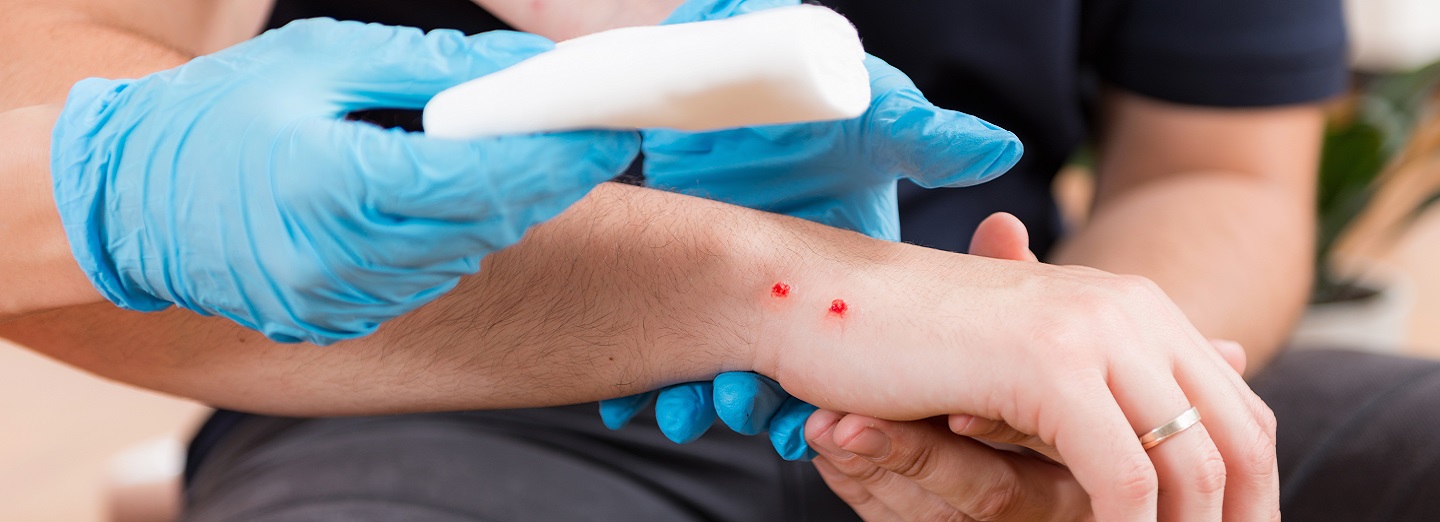
SUMMARY
The nature of our outdoor programs puts Scouts in the natural habitats of a variety of venomous and non-venomous snakes. The venomous snakes that live in the United States include coral snakes and pit vipers (rattlesnakes, copperheads, and cottonmouths/ water moccasins). Snakes will usually try to avoid humans but may strike if they feel threatened. While many people are scared of snakes, some people have a desire to touch or closely examine snakes—often leading to snake bites. If you remain aware of your surroundings and wear the proper clothing for the environment (high-top leather boots, thick loose-fitting denim or canvas pants, and leather gloves are some examples), you can reduce the chances of being bitten.
GENERAL INFORMATION
Bites of non-venomous snakes are generally harmless to humans, though complications can arise if a tooth remains in the wound or an infection develops. The bite might look “U” shaped. Of an estimated 45,000 snake bites each year in the United States, about 8,000 are by venomous snakes, and the majority of these are from rattlesnakes. Venomous snake bites generally will have two fang marks unless the snake is missing a fang. Only about five deaths result annually from venomous snake bites. These deaths occurred because victims were delayed in receiving advanced medical treatment once they were bitten. Most snake bites happen when someone accidentally steps on the snake. Learn to identify the snakes in the areas of your activities, because the ability to identify the type of snake or the bite marks will help determine the potential severity of the bite and the care that is needed. If you are not sure whether the snake is venomous, assume it is and seek medical care.
CARE FOR SNAKE BITES
Care for a non-venomous snake bite is the same as for any minor wound: Wash with soap and water, apply antibiotic ointment— if you are not allergic—and apply a bandage.
For all venomous snake bites:
- Get everyone away from the snake.
- DO NOT try to capture the snake.
- Keep the victim quiet.
- Immobilize the injured part of the body.
- Gently wash the bite with soap and water.
- Seek medical care immediately!
- Carry the victim out, if possible, because their reduced activity may slow the spread of the venom. If attempting to carry the victim delays care, then have them walk.
- DO NOT delay getting the victim to emergency health care by taking time to do such things as cleaning the wound. That can be done on the way to the emergency department.
When caring for ANY venomous snake bites:
- DO NOT cut the victim’s skin.
- DO NOT use mouth suction or any other suction device.
- DO NOT apply ice or cold packs.
- DO NOT apply a compression bandage to any snake bite. It does not help and only slows the victim getting to advanced medical treatment.
When caring for a coral snake bite:
- Treat the same as for a pit viper.
- DO NOT apply a compression bandage.
RESOURCES




